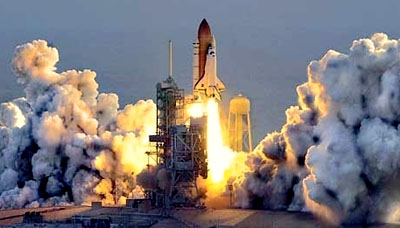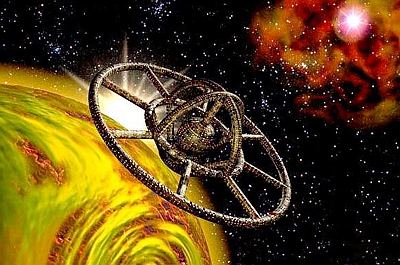|
How much fantasy must one have in order to realistically describe the
view
of earth from the perspective of a space traveler, just like how
this epic reports thousands of years ago? Naturally this narration is
purely a spiritual discovery (dream) in the eyes of science and has
nothing to do with a factual report.
A further primeval flight
guest was the biblical Abraham,
as he described his experiences:

"And it happened at sunset,
there was smoke, like smoke >from an oven...
So he carried me to the limits of the fire flames. Then we climbed up,
like with many winds, into heaven, if that was the firmament."
When he arrived in the "city
of the gods", he reports:
"But I wished to fall
back to earth. The high location,
on which we stood, soon stood upright, soon turned itself downwards.
The stars were sometimes above, sometimes below."

A classical description of the
impressions of how space habitats are developed,
that were already designed on the drawing board by NASA.
Future orbital stations in the form of huge wheels that rotate on their
own axis
and can create an artificial gravity. But even these developments were
already
anticpated by early history, and such space cities in the form on huge
wheels were unequivocal described in the old Indian texts (Mahabharata
and Ramyana).
Index
of Mahabharata (german, H.Jacobi)
|



